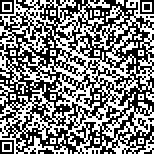| 摘要: |
| 本文基于Chelton提供的涡旋数据集和浮标漂流轨迹提取的涡旋结果,对1993—2015年的全球涡旋进行特征信息对比分析。结果表明,在全球范围内高度计涡旋数据集中的欧拉涡旋和浮标漂流轨迹提取的拉格朗日涡旋的配对成功率在空间分布上并不均衡,在中纬度(20°—60°S,20°—60°N)配对成功率最高可达25%,而在20°S—20°N区域内配对成功率不到10%。由于低纬度地转效应并不显著,卫星高度计无法有效观测到涡旋,但通过浮标漂流轨迹识别出的拉格朗日涡旋却大量存在,这说明在低纬度区域内,采用漂流浮标手段对涡旋进行观测,能够有效地弥补卫星高度计识别涡旋的区域限制。进一步分析表明,总体而言,提取的欧拉涡旋半径要大于拉格朗日涡旋闭合回路半径。两种识别方法获得的涡旋(闭合回路)在20°—50°S,20°—50°N的副热带和中纬度海区半径大致相当;20°S—20°N度以内(特别是近赤道区域)、高纬度区域以及西边界流区域,欧拉涡旋半径是同期拉格朗日涡旋闭合回路半径的3倍或更多。此外,对配对涡旋的Rossby数分析结果显示,拉格朗日涡旋较小的闭合回路对应较大的平均相对涡度,这表明浮标在被中尺度涡俘获后,更容易在相对涡度较大的地方(如中尺度涡中心、中尺度涡边缘等)形成闭合回路。 |
| 关键词: Rossby数 涡旋配对成功率 涡旋半径 相对涡度 |
| DOI:10.11693/hyhz20181100269 |
| 分类号:P731.2 |
| 基金项目:国家自然科学基金,41776020号,41630967号,41421005号;国家海洋局“全球变化与海气相互作用专项”,GASI-IPOVAI-01-06号;国家自然科学基金委员会-山东省人民政府联合资助海洋科学研究中心项目,U1406401号。 |
附件 |
|
| ANALYSIS OF THE GLOBAL EDDIES BASED ON ALTIMETER SNAPSHOTS AND BUOY DRIFTING TRAJECTORY DATA |
|
ZHAO Xin-Hua1,2, HOU Yi-Jun1,2,3,4,5, LIU Ze1,3,4,5, ZHUANG Zhan-Peng6, WANG Kai-Di7
|
|
1.The Key Laboratory of Ocean Circulation and Waves, Institute of Oceanology, Chinese Academy of Sciences, Qingdao 266071, China;2.University of the Chinese Academy of Sciences, Beijing 100049, China;3.Center for Ocean Mega-Science, Chinese Academy of Sciences, Qingdao 266071, China;4.Pilot National Laboratory for Marine Science and Technology(Qingdao), Laboratory for Ocean and Climate Dynamics;5.Chinese Academy of Sciences, Center for Ocean Mega-Science, Qingdao 266000, China;6.First Institute of Oceanography, Ministry of Natural Resources of China, Qingdao 266061, China;7.Ocean University of China, Qingdao 266100, China
|
| Abstract: |
| Based on the altimeter eddy data set published by Chelton and the buoy-drifting trajectory eddies from 1993 to 2015, we match the Eulerian eddy recognized from satellite altimeter and Lagrangian eddy from buoy-drifting trajectory in the same period. Results show that the rate of pairing success between the Eulerian eddies and the Lagrangian eddies is not uniform in space. Between 20° and 60° in both north and south latitudes, the rate pairing success reaches 25%, but in the equatorial region, it is below 10%. Due to the Coriolis effect in the low latitude area is insignificant, the satellite altimeter observations could not be effective to the Eulerian eddy; however, the Lagrangeian eddies identified by the buoy trajectory are abundant, which indicates that the eddy observation by the drifting buoy in the low latitude region could effectively overcome the area limitation of the satellite altimeter observation. Further analysis shows, the Eulerian eddy radius (closed loop) is generally larger than that of the paired Lagrangeian eddy. The eddy radius obtained by the two identification methods is roughly equivalent inside the ocean, but between 20° in the north and south of the equator (especially near the equatorial region), high latitude regions, and western boundary current regions, the Eulerian eddy radius is more than triple the radius of the simultaneous Lagrangeian eddy closed loop. In addition, when analyzing the global distribution of the ratio for the Eulerian eddy, the Rossby number, and the corresponding Lagrangeian eddy Rossby number, it is observed that the closed loop with smaller Lagrangeian eddy corresponds to a larger average relative vorticity. That is, after the buoy is captured by the meso-scale eddy, it is easier to form a closed loop where the relative vorticity is larger (such as meso-scale eddy centers, mesos-cale eddy edges, etc.). |
| Key words: Rossby number success rate of eddy pairing eddy radius relative vorticity |
